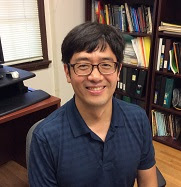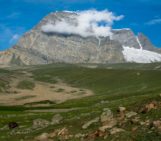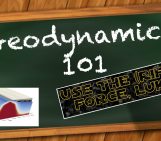
This week, Dr. Eunseo Choi, a professor at the Center for Earthquake Research and Information, the University of Memphis, talks about tectonic modelling using DES3D. *Spoiler alert* read till the end for an exciting opportunity to work on it
The advent of the open-source movement and the free public software repositories such as GitHub have drastically improved the way research codes are maintained, distributed, and attributed. However, it takes much more than free availability for a research code to serve a broad community beyond a small group of experts.
 To be accepted community-wide, a research code would have to be versatile in addressing various problems deemed important in the community. It should also be maintained regularly and for a long term to be reliable. To attract experts and beginners alike, it should be easy to install and use. The last point is often termed user experience. For favorable user experiences, extensive documentations are necessary on installation, usage, and extension through API (application programming interface. Nowadays, it is common to help end users have the known working environment in the form of a container to be run on a local computer or on a cloud computing platform.
To be accepted community-wide, a research code would have to be versatile in addressing various problems deemed important in the community. It should also be maintained regularly and for a long term to be reliable. To attract experts and beginners alike, it should be easy to install and use. The last point is often termed user experience. For favorable user experiences, extensive documentations are necessary on installation, usage, and extension through API (application programming interface. Nowadays, it is common to help end users have the known working environment in the form of a container to be run on a local computer or on a cloud computing platform.
With a support from National Science Foundation (Grant No. 2104002), a project has launched to turn DES3D (Dynamic Earth Solver in 3D; https://github.com/tan2/DynEarth.git) into a community service. DES3D is an open source tectonic modeling code (Choi et al., 2013; Tan et al., 2013). DES3D inherits the main algorithms of geoFLAC (Fast Lagrangian Analysis of Continue for Geociences; https://github.com/tan2/geoflac.git) (Cundall, 1982; Poliakov et al., 1998), which is to find quasi-static momentum balance by dynamic relaxation, a form of damping. It can track the thermal evolution of crust and lithosphere, of which deformations can be described with elasto-visco-plastic rheology. DES3D is unique among the available tectonic modeling codes in that it employs the updated Lagrangian description of motion and solves the full momentum balance equation with damping rather than the Stokes equation.
To make DES3D usable for the next-generation research problems, coupling with earthquake cycle and surface process modeling will be pursued (Fig. 1). The importance of this capability is well reflected in the list of high-priority research questions recommended to the US National Science Foundation (NASEM, 2020), which includes “What are the causes and consequences of topographic change?“ The importance of this question is in the emphasis on the two-way interactions of topography with “processes that operate above, on, and below Earth’s surface at many scales” (p.32, NASEM, 2020). For instance, mantle dynamics, lithospheric deformations, earthquakes, and erosion can all change the surface morphology over different spatial and temporal scales; and the evolving topography itself can affect these processes by modifying lithospheric stresses and erosion processes. Efforts to model the interplay among the long-term tectonic deformations, landscape evolution, and earthquake cycles are under way (e.g., Beucher et al., 2019; Tong and Lavier, 2018; Upton et al., 2018; Van Dinther et al., 2013) and DES3D capable of the coupled modeling will add to the diversity and openness of the available tools.

Fig.1: Examples of the three targeted modeling capabilities, tectonics, earthquake cycle and surface process, to be integrated into a single platform. (left) Tectonic modeling example showing a well-developed three-dimensional core complex. (middle) Rupture occurring on a vertical strike slip (Tong, 2019). (right) Landscape modified by channel incision during a basin formation.
Improvements will be made on the computational and software engineering side, too. The parallel performance of DES3D, currently multithread parallel via OpenMP, will be enhanced through hybrid parallelization combining domain decomposition across a cluster and co-processors on each node. Long-term maintenance will be aided by modern software engineering practices employed in the build system and unit and regression testing. User experiences will be improved through better documentation, more examples and tutorials and input file generator with graphic user interface.
The project is looking for a post-doctoral researcher who is interested in taking on any of the tasks described above. Please contact Eunseo Choi (echoi2@memphis.edu) for details.
References Beucher R et al., (2019) UWGeodynamics: A teaching and research tool for numerical geodynamic modelling. Journal of Open Source Software, 4(36):1136. Choi, E., Tan, E., Lavier, L.L., Calo, V.M., 2013. DynEarthSol2D: An efficient unstructured finite element method to study long-term tectonic deformation. Journal of Geophysical Research: Solid Earth 118, 2429–2444. Cundall, P.A., 1989. Numerical experiments on localization in frictional materials. Ingenieur Archiv. 58, 148–159. Dinther Y Van, Gerya T V., Dalguer LA, Mai PM, Morra G, Giardini D (2013) The seismic cycle at subduction thrusts: Insights from seismo-thermo- mechanical models. Journal of Geophysical Research: Solid Earth, 118(12):6183–6202. Poliakov, a N.B., Cundall, P. a, Podladchikov, Y.Y., Lyakhovsky, V. a, 1993. An Explicit Inertial Method for the Simulation of Viscoelastic Flow: An Evaluation of Elastic Effects on Diapiric Flow in Two- and Three- Layers Models, in: Flow and Creep in the Solar System: Observations, Modeling and Theory. Springer Netherlands, Dordrecht, pp. 175–195. Tan, E., Choi, E., Lavier, L., Calo, V., 2013. DynEarthSol3D: An Efficient and Flexible Unstructured Finite Element Method to Study Long-Term Tectonic Deformation,. Abstract DI31A-2197 presented at 2013 Fall Meeting, AGU, San Francisco, Calif., 9-13 Dec. Tong, X., 2019. Earthquakes and slip transients through multi-dimensional and multi-physics thermomechanical modeling. Ph.D Thesis, the University of Texas at Austin. Tong, X., Lavier, L.L., 2018. Simulation of slip transients and earthquakes in finite thickness shear zones with a plastic formulation. Nature Communications 9, 3893. Upton P, Song BR, Koons PO (2018) Topographic control on shallow fault structure and strain partitioning near Whataroa, New Zealand demonstrates weak Alpine Fault. New Zealand Journal of Geology and Geophysics, 61(1):1–8.




